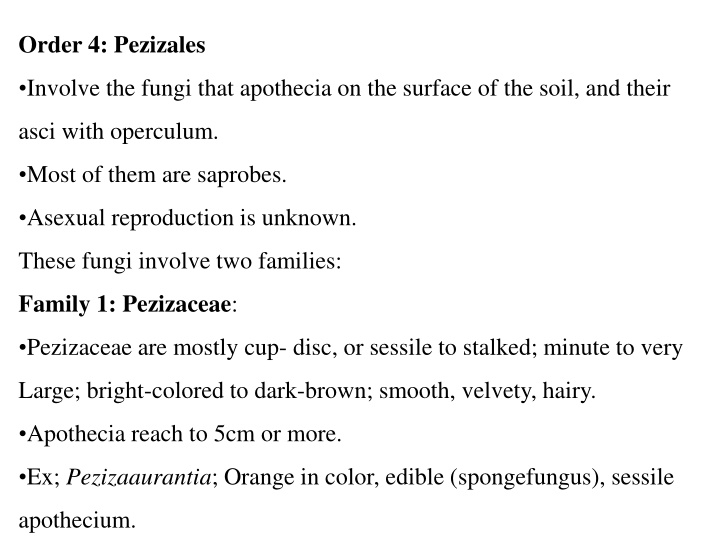
Pezizales Fungi: Pezizaceae and Morchellaceae Families
Explore the fascinating Pezizales fungi, including the cup-shaped Pezizaceae and large-stalked Morchellaceae families. Learn about their unique characteristics, habitat, and significance in the ecosystem.
Download Presentation

Please find below an Image/Link to download the presentation.
The content on the website is provided AS IS for your information and personal use only. It may not be sold, licensed, or shared on other websites without obtaining consent from the author. If you encounter any issues during the download, it is possible that the publisher has removed the file from their server.
You are allowed to download the files provided on this website for personal or commercial use, subject to the condition that they are used lawfully. All files are the property of their respective owners.
The content on the website is provided AS IS for your information and personal use only. It may not be sold, licensed, or shared on other websites without obtaining consent from the author.
E N D
Presentation Transcript
Order 4: Pezizales Involve the fungi that apothecia on the surface of the soil, and their asci with operculum. Most of them are saprobes. Asexual reproduction is unknown. These fungi involve two families: Family 1: Pezizaceae: Pezizaceae are mostly cup- disc, or sessile to stalked; minute to very Large; bright-colored to dark-brown; smooth, velvety, hairy. Apothecia reach to 5cm or more. Ex; Pezizaaurantia; Orange in color, edible (spongefungus), sessile apothecium.
Family 2; Morchellaceae: Morchellaceae is characterized by large, stalked apothecia. Apothecia reach to 14cm. Grayish white to a dark-brown in color. Morchellaspp. The ascocarps are hypogean and remain closed in most species, liberating the ascospores only when the ascocarp decays or broken by animals.






















